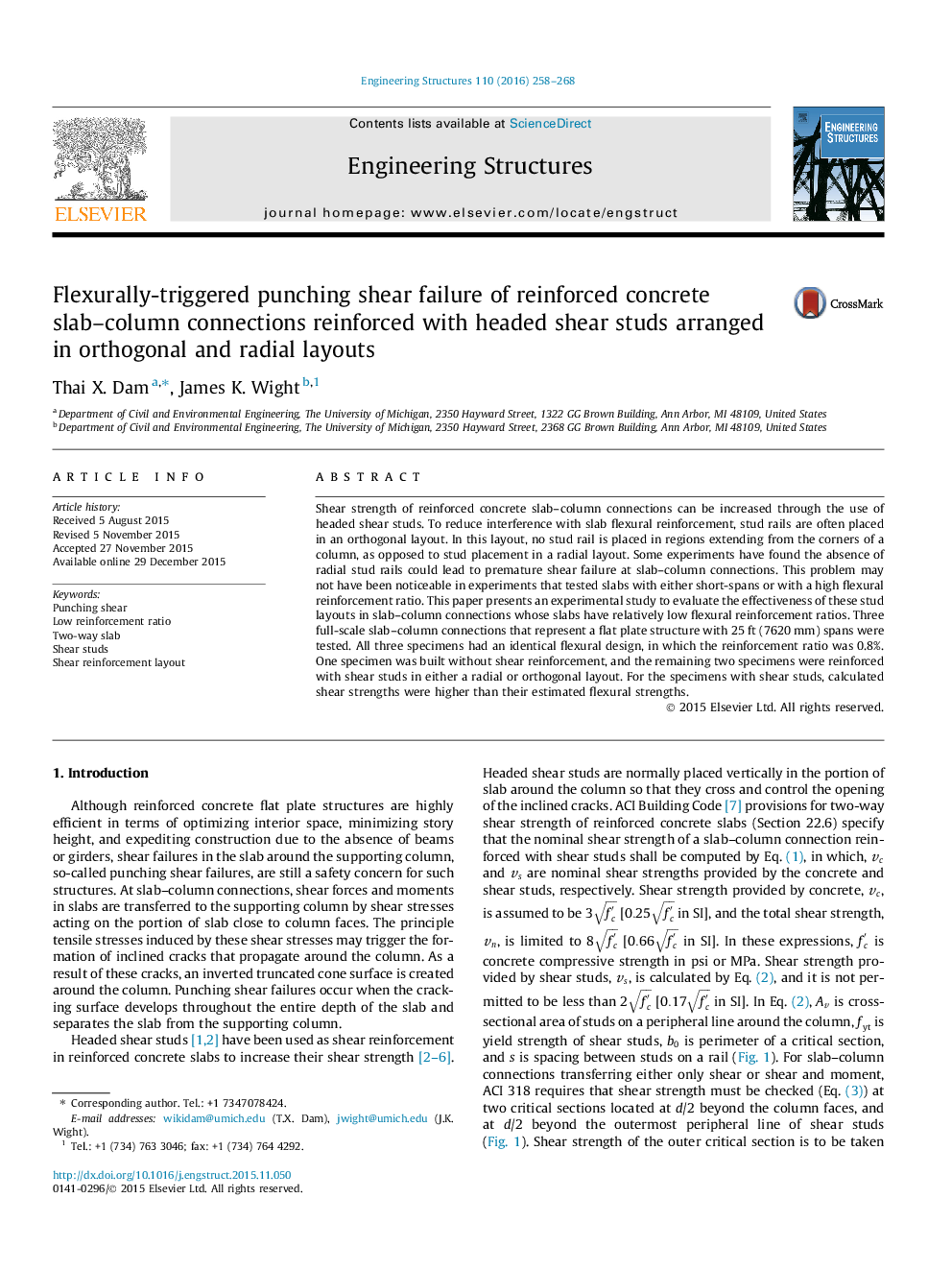| Article ID | Journal | Published Year | Pages | File Type |
|---|---|---|---|---|
| 265910 | Engineering Structures | 2016 | 11 Pages |
•Three full-scale reinforced concrete slab–column connections were tested.•For ductility, radial layouts of shear studs are better than orthogonal layouts.•Local flexural strength affects shear strength of slab–column connections.•ACI 318 is not conservative for slabs with low flexural tension reinforcement ratios.
Shear strength of reinforced concrete slab–column connections can be increased through the use of headed shear studs. To reduce interference with slab flexural reinforcement, stud rails are often placed in an orthogonal layout. In this layout, no stud rail is placed in regions extending from the corners of a column, as opposed to stud placement in a radial layout. Some experiments have found the absence of radial stud rails could lead to premature shear failure at slab–column connections. This problem may not have been noticeable in experiments that tested slabs with either short-spans or with a high flexural reinforcement ratio. This paper presents an experimental study to evaluate the effectiveness of these stud layouts in slab–column connections whose slabs have relatively low flexural reinforcement ratios. Three full-scale slab–column connections that represent a flat plate structure with 25 ft (7620 mm) spans were tested. All three specimens had an identical flexural design, in which the reinforcement ratio was 0.8%. One specimen was built without shear reinforcement, and the remaining two specimens were reinforced with shear studs in either a radial or orthogonal layout. For the specimens with shear studs, calculated shear strengths were higher than their estimated flexural strengths.
